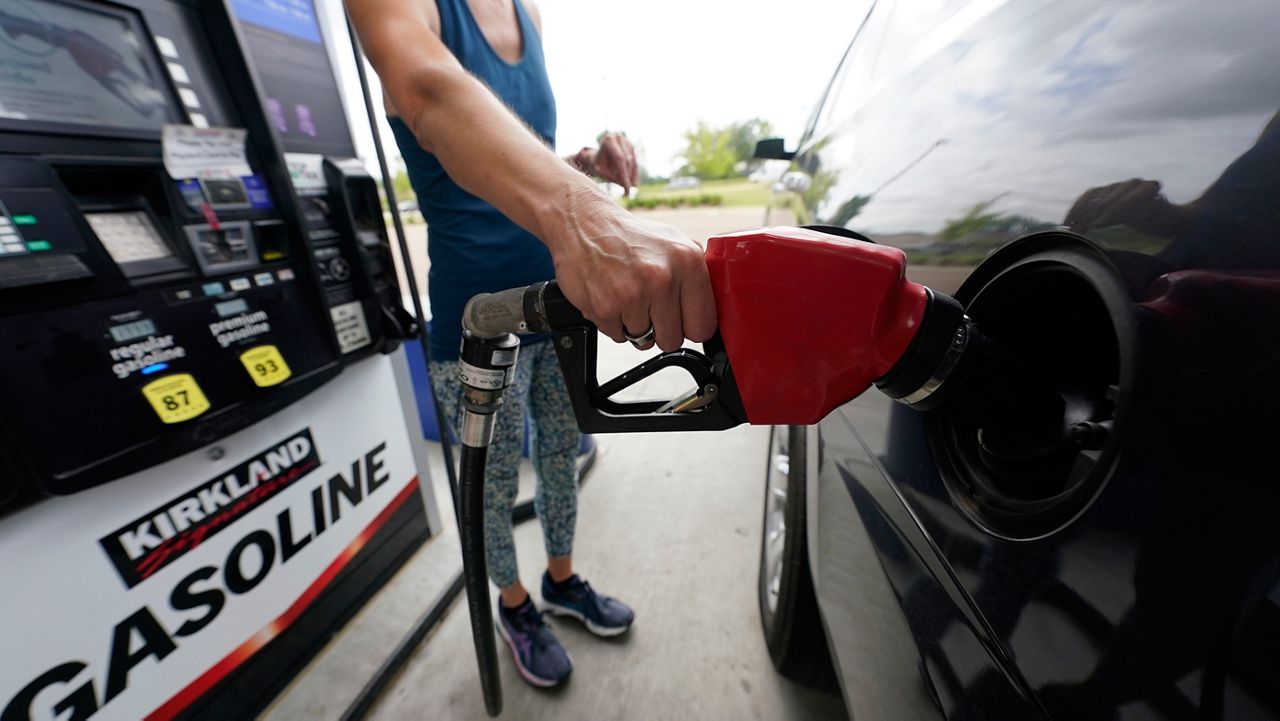Consumer price increases slowed more than expected in October, easing pressure on households and the economy and signaling that inflationary pressures may be easing.
The Consumer Price Index showed that inflation has cooled somewhat to a still-high 7.7% in the last 12 months, according to figures released Thursday by the Bureau of Labor Statistics, down from 8.2% the month prior.
Consumer inflation reached 7.7% in October from a year earlier and 0.4% from September, the government said Thursday. The year-over-year increase, a slowdown from 8.2% in September, was the smallest rise since January. A separate gauge called core inflation, which excludes volatile food and energy, rose 6.3% in the past 12 months and 0.3% from September.
The numbers were all lower than economists had expected.
In a statement, President Joe Biden said that Thursday's report is evidence that the U.S. is "making progress" on reducing inflationary pressures "without giving up all of the progress we have made on economic growth and job creation" – a source of worry for some experts as the Federal Reserve continues to raise interest rates in order to tame inflation.
Biden hailed the fact that the report showed "a much-needed break in inflation at the grocery store as we head into the holidays" and reminded Americans that his plan to lower prescription drug and energy costs is set to go into effect "in less than eight weeks."
"It will take time to get inflation back to normal levels – and we could see setbacks along the way – but we will keep at it and help families with the cost of living," Biden said, adding: "It has been a hard two years to recover from where things were in January 2021. But our economy has reopened, new jobs are being created, new businesses are growing, and now, we are seeing progress in getting inflation under control – with additional measures taking effect soon."
"I will work with anyone – Democrat or Republican – on ideas to provide more breathing room to middle-class and working families," Biden said, echoing his first post-midterm comments on Wednesday. "And I will oppose any effort to undo my agenda or to make inflation worse."
Helping drive the inflation slowdown from September to October were used car prices, which dropped for a fourth straight month. Also down were the prices of clothing and medical care. Food price increases slowed. By contrast, energy prices rebounded in October after having declined in August and September.
Even with last month’s tentative easing of inflation, the Federal Reserve is widely expected to keep raising interest rates to try to stem persistently high price increases. But Thursday’s better-than-expected data raised the possibility that the Fed could decide to slow its rate hikes — a prospect that sent stock prices jumping immediately after the government issued the figures.
Many economists have warned that in continuing to tighten credit, the central bank is likely to cause a recession by next year. So far this year, the Fed has raised its benchmark interest rate six times in sizable increments, heightening the risk that prohibitively high borrowing rates — for mortgages, auto purchases and other high-cost expenses — will tip the world’s largest economy into recession.
Some economists suggested that the latest inflation data shows that the hikes are beginning to achieve their goal, though the Fed needs to see further evidence.
Even before the release of Thursday’s figures, inflation by some measures had begun to ease and could continue to do so in coming months. Most gauges of workers’ wages, for example, show that the robust pay increases of the past 18 months have leveled off and have begun to fall. Though worker pay is not a primary driver of higher prices, it can compound inflationary pressures if companies offset their higher labor costs by charging their customers more.
Except for automakers, which are still struggling to acquire the computer chips they need, supply chain disruptions have largely unsnarled. Shipping costs have dropped back to pre-pandemic levels. The backup of cargo ships off the port of Los Angeles and Long Beach has been cleared.
And as declines in new rents that have emerged in real-time measures from such sources as ApartmentList and Zillow begin to be captured in the government’s forthcoming measures, that factor should also reduce inflation.
Even as many fear that the economy will fall into recession next year, the nation’s job market has remained resilient. Employers have added a healthy average of 407,000 jobs a month, and the unemployment rate is just 3.7%, close to a half-century low. Job openings are still at historically high levels.
But the Fed’s rate hikes have inflicted severe damage on the American housing market. The average rate on a 30-year fixed mortgage has more than doubled over the past year, topping 7% before falling slightly last week. As a result, investment in housing collapsed in the July-September quarter, falling at a 26% annual rate.
Higher mortgage rates have depressed sales. Home prices are slowing sharply compared with a year ago and have begun to fall on a monthly basis. The cost of a new apartment lease is also declining.



